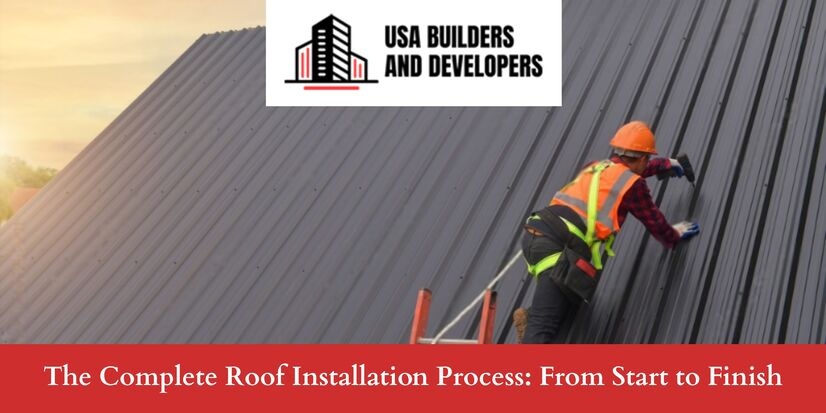Installing a new roof is a significant investment for any homeowner. Understanding the entire process from start to finish can help you make informed decisions and ensure a successful project. In this blog, we will walk you through each step of the roof installation process, providing detailed insights to help you feel confident about roofing services.
1. Initial Consultation and Inspection
The first step in the roof installation process is the initial consultation and inspection. During this phase, a professional roofing contractor will visit your home to assess the current condition of your roof, discuss your needs, and provide recommendations. This inspection helps identify any underlying issues that may need to be addressed before the new roof is installed.
Key Points:
- Evaluate roof condition
- Discuss material options
- Identify potential issues
2. Choosing the Right Roofing Materials
Selecting the appropriate roofing materials is crucial for the longevity and aesthetics of your new roof. Your contractor will guide you through various options, such as asphalt shingles, metal roofing, tile, or slate. Each material has its advantages and considerations, including cost, durability, and appearance.
Key Points:
- Understand material types
- Consider budget and longevity
- Match materials with home style
3. Obtaining Permits and Preparing the Site
Before the actual installation begins, necessary permits must be obtained from local authorities. Your contractor will handle this process to ensure compliance with building codes and regulations. Additionally, the site will be prepared by removing any existing roofing materials and ensuring the area is safe for the installation team.
Key Points:
- Secure necessary permits
- Clear and prepare the site
- Ensure safety protocols
4. Removing the Old Roof
The next step involves removing the old roofing materials. This is a critical phase, as it allows for a thorough inspection of the underlying structure. Any damaged or rotten wood will be replaced to provide a solid foundation for the new roof.
Key Points:
- Carefully remove old materials
- Inspect and repair the underlying structure
- Dispose of old materials properly
5. Installing the Roof Decking
Once the old roof is removed and any necessary repairs are made, the new roof decking is installed. The decking provides a stable base for the roofing materials and helps to ensure a secure and long-lasting installation.
Key Points:
- Install new roof decking
- Ensure proper alignment and stability
- Check for any structural issues
6. Installing Underlayment and Flashing
Underlayment and flashing are essential components of a roofing system. The underlayment acts as a moisture barrier, while flashing prevents water from seeping into vulnerable areas, such as around chimneys and vents. Proper installation of these elements is crucial for the roof’s overall performance.
Key Points:
- Lay down underlayment
- Install flashing around vulnerable areas
- Ensure waterproofing integrity
7. Installing the New Roofing Material
With the underlayment and flashing in place, the new roofing material can be install. The process will vary depending on the type of material chosen, but generally involves laying down the roofing in a systematic manner to ensure proper coverage and alignment.
Key Points:
- Install roofing material according to manufacturer guidelines
- Ensure proper alignment and coverage
- Secure materials to prevent wind uplift
8. Final Inspection and Clean-Up
After the new roof is installed, a final inspection is conducted to ensure everything is properly in place and meets quality standards. Any minor adjustments will be made, and the site will be thoroughly cleaned, leaving your property looking tidy and well-maintained.
Key Points:
- Conduct a detailed inspection
- Make necessary adjustments
- Clean up the site
9. Post-Installation Maintenance
Once your new roof is installed, regular maintenance is key to preserving its longevity. Schedule periodic inspections, keep gutters clean, and promptly address any issues that arise. Proper maintenance can help extend the life of your roof and protect your investment.
Key Points:
- Schedule regular inspections
- Keep gutters and roof clean
- Address issues promptly
FAQs About Roof Installation Process
A complete roof installation typically takes 1 to 3 days, depending on the roof size, material type, and weather conditions. Larger homes or complex roof structures may take longer.
Before a roof installation, clear your driveway, protect items in the attic, remove wall decorations, and inform your neighbors. These steps help ensure a smooth and safe roofing installation process.
The complete roof installation process includes inspection, old roof removal, underlayment installation, new roofing material installation, and final cleanup. Each step is crucial for a long-lasting, high-quality roof.
In 2025, the cost of roof installation ranges from $5,000 to $15,000, depending on the roofing material, labor, and home size. Getting multiple quotes from roofing contractors helps ensure fair pricing.
The best roofing materials depend on your budget, climate, and home style. Asphalt shingles are affordable and popular, while metal and tile roofs offer durability and energy efficiency for long-term performance.
Final Thoughts
A new roof installation is a significant investment that requires careful planning and execution. By understanding each step of the process, you can ensure a smooth and successful project. If you’re considering a new roof, visit USA Builders and Developers for a professional and reliable roofing service that you can trust.
Have Questions? Call Us Now!
We’re here to help—quick answers, friendly service, anytime you need!

